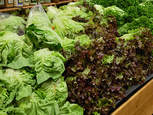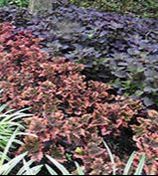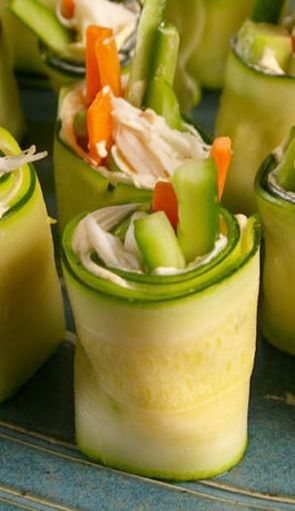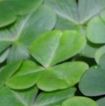|
Ozark Green Thumb BCMG Monthly e-Newsletter |
|
|
2 Comments
 Gardeners aching to get outside, shake off the winter chill, and dig their hands in the dirt, planting a lettuce bed is an ideal activity. Lettuce is also a good introductory crop for beginning growers. READY THE SOIL Prepare for spring planting by mulching soil over the winter. Once summer and fall crops are done, remove the old plant material, and cover the soil with chopped leaves or grass clippings from your yard. This keeps the weeds down and prevents soil erosion from winter wind and rain. Lettuce works well in raised beds. Soil temperatures warm up more quickly in a raised bed than in thr ground, speeding up seed germination and plant growth. SEED OR TRANSPLANT? Lettuce can be planted using transplants or directly seeded into the soil. In the spring, transplants work particularly well because they provide a jump start on the season and are hardy enough to withstand most springtime temperature swings. Depending on the variety and the weather, lettuce can be planted as early as late February and the beginning of March. If temperatures drop significantly, use a row cover to protect lettuce from damage. PICK YOUR GREENS Lettuce comes in numerous varieties, which can be harvested as a head or as leaves. Many varieties allow for different harvesting techniques, depending upon your preference. Pick the outer leaves at the preferred stage of maturity, or let the head of lettuce mature and harvest it whole. Gradually harvesting lettuce leaves every couple of days extends the harvest season as the plant continues to produce leaves. Several lettuce varieties are both edible and decorative enough for use in flower beds or containers on the porch. CARE TIPS Water is the key to healthy lettuce. Lettuce likes an inch of water a week, or it will turn bitter. If using potting soil or another dark soil, the dirt should be the color of dark chocolate when properly watered. If it's the color of milk chocolate, it needs water. Another test is to stick your finger in the soil down to your second knuckle; the soil should be moist to that depth. As for sunlight requirements, lettuce only requires about four hours a day but the more sunlight the better. PREPARE FOR FALL Lettuce is a dual season crop in our area. once the summer season arrives, lettuce will bolt, which means it goes to seed and it leaves become bitter. But keep lettuce in mind for a fall crop, planting in late August or September. Source: By Leah Hughes
Charlotte Home Garden  In the South the so-called lazy days of summer conjure up images of fireflies, watermelons and crapemyrtles in bloom. Crapemyrtles are quintessential southern plants so deeply ingrained in our landscapes and lives they seem to have always been here, but such is not the case. Crapemyrtles (genus Lagerstroemia) consist of about 50 species of woody trees and shrubs of the loosestrife family scattered throughout the Indian subcontinent from Korea to Australia to modern day India. L. indica, the plant our grandparents grew in their gardens, hail from China and Korea where it has been grown in gardens for more than1,000 years. Since the 1970s many of the most popular crapemyrtle selections now found in nurseries are hybrids created at the U.S. National Arboretum by the late Dr. Don Egolf, who hybridized the old favorite with a Japanese species (L. fauriei) to create mildew resistant- and more cold-hardy forms. It is difficult to describe the typical crapemyrtle because they come in such a bewildering array of shapes, sizes and bloom colors. From a landscape perspective it is perhaps best to think of them in four size groups. The tree form crapemyrtles are 15-to 35-foot tall, usually multiple branched trees with a rounded crown. It is the tree form crapemyrtles that produce the beautifully colored and sensuous trunks in shades of gray, gray-green and cinnamon colors that require you to reach out and touch them to assure yourself they are real. The shrub form plants are those that grow from 6-to-15 feet tall with a densely brushy character. The dwarf crapemyrtles are those that grow less than 6 feet tall - but truth be told - if left unpruned long enough they will gradually grow large enough to attain shrub stature. The newest category of crapemyrtle growth forms are the prostrate or trailing forms that creep across the ground and are used at the top of retaining walls or even in hanging baskets. Crapemyrtles are late to leaf out and usually don’t produce their first leaves until mid April. New leaf growth is often tinged with maroon with the oblong leaves turning green as they reach full size. Fall color is usually excellent on older specimens and seen in shades of yellow, orange, red or coppery-red. Flowers are produced on new growth during the summer in terminal panicles and appear in shades of pink, purple, red, or white. The individual blooms are about 1-inch-wide with six stalked petals formed as from crumpled crepe paper. Yellow stamens serve as counterpoint but are only visible on close inspection. The panicles tend to be cone shaped and 6 to 12 inches long. Depending on the cultivar, bloom season will commence as soon as late spring to as late as early August. If bloom panicles are pinched off plants will continue to bloom, giving rise to the Chinese name for the plant “Hundred-Day Red.” Seedpods are produced in profusion and are about the size of a peanut. Crapemyrtles were introduced to the west in 1759 and made it to the United States in the 1790’s where George Washington grew it at Mount Vernon. But its commercial introduction happened simultaneously in Charleston, S.C., when French botanist Andre Michaux established a nursery to grow the plants he was gathering in the southeastern states. It soon became a staple of the large plantations and southern landscape was changed forever. Crapemyrtles are easy to grow from zone 7 through 9 where they tolerate almost any soil conditions so long as they are in full sun. They love heat and tolerate drought conditions better than almost any other landscape plant. In a future column we will discuss the different views on how to properly prune crapemyrtles. Interestingly, the Easter freeze of 2007 that dropped the temperature to 17 degrees F on April 10 and held it below freezing for 48 hours, devastating many native trees and shrubs, didn’t phase the crapemyrtles because they were still fully dormant. By: Gerald Klingaman, retired
Retired Extension Horticulturist - Ornamentals Extension News - July 19, 2013  When choosing color for your garden, make sure you have something blooming in every season. Annuals are plants we need to replant every year, so you don’t want a yard that is all annuals, or you have to replace the entire garden twice a year. We have warm season annuals for summer color and cool season annuals for fall and winter color. Perennials are plants that come back for more than one year, and often they come back larger each season, so give them room to grow. Plant your seasonal color in a concentrated block of color to make the biggest impact in the garden. Consider entryways or other visible parts of the garden. Annuals and perennials do well in containers or planted in the ground. Group plants together that need the same conditions — sun, water and fertilizer With annuals, fertilize frequently to keep them blooming. Water needs will vary from plant to plant, but all plants need water to get roots established. Perennials typically need less fertilizer than annuals, but more than trees and shrubs. Some good choices for annual flowers include plants in the Arkansas Diamonds program — a partnership between the Arkansas Green Industry Association, the University of Arkansas Cooperative Extension Service, local growers and independent garden centers with the goal to educate Arkansas gardeners about annual plants that consistently perform well in our state. For 2016, three new summer annuals have been added to the Arkansas Diamonds program. The plants chosen are two sun lovers – “Graffiti Red” pentas and “Sriracha Pink” cuphea, and the shade-loving “Velvet Elvis” plectranthus.
Some additional shade annuals include the wishbone flower, torenia, or begonias, impatiens and coleus. And don’t forget tropical flowering plants. Although some gardeners do overwinter them indoors to extend their life, they can also be planted in the garden and treated as summer annuals. From the pink-blooming mandevilla to a wide range of tropical hibiscus blooms, they thrive on heat and humidity, and provide plenty of seasonal color. Perennial plants typically have a season of bloom and a season of green. Some bloom in the winter, some late winter to early spring, some for summer and others for fall. Choose a variety to extend the bloom periods in your garden. Some great summer choices include the milkweeds — Asclepias tuberosa is the showy orange butterfly weed that blooms for months in the summer and is a great host plant for monarch butterflies. Echinacea, or purple coneflower, now comes in a wide range of colors and is a long-season bloomer, provided the blooms are dead-headed after flowering. Hardy hibiscus love water and sunlight, and bloom from June through August, and gaillardia or blanket flower, gives you a sea of color all summer in the sun. If you have shade, try some hardy geraniums; they look nothing like the annual flowering plants, or heuchera (coral bells), with foliage in almost every color of the rainbow. Woodland poppies provide bright yellow flowers, and while hostas are grown more for their foliage, they do produce flower spikes. By: Janet B. Carson, "Add Pizzazz to Your Garden." http://arkansaslivingmagazine.com/article/add-pizzazz-to-your-garden/  Crispier and quicker than mushy casserole. Total Time: 0:25 Prep: 0:25 Level: Easy Serves: 6 Image: Judy Kim Ingredients
Judy Kim is a NYC-based food stylist, recipe developer, and photographer. She also writes recipes for her website The Judy Lab.  These little bites are super refreshing. Total Time: 0:20 Prep: 0:20 Level: Easy Serves: 2 Ingredients
By: Lauren Miyashiro, "Zucchini Sushi" http://www.delish.com/cooking/recipe-ideas/recipes/a52239/zucchini-sushi-recipe/  Shamrocks have been symbolic of many things over the years. According to legend, the shamrock was a sacred plant to the Druids of Ireland because its leaves formed a triad, and three was a mystical number in the Celtic religion, as in many others. St. Patrick used the shamrock in the 5th century to illustrate the doctrine of the Holy Trinity as he introduced Christianity to Ireland. “Wearin’ o’ the green”The shamrock became symbolic in other ways as time went on. In the 19th century it became a symbol of rebellion, and anyone wearing it risked death by hanging. It was this period that spawned the phrase “the wearin’ o’ the green”. Today, the shamrock is the most recognized symbol of the Irish, especially on St. Patrick’s Day, when all over the world, everyone is Irish for a day! The original Irish shamrock (traditionally spelled seamróg, which means “summer plant”) is said by many authorities to be none other than white clover (Trifolium repens), a common lawn weed originally native to Ireland. It is a vigorous, rhizomatous, stem-rooting perennial with trifoliate leaves. Occasionally, a fourth leaflet will appear, making a “four-leaf clover,” said to bring good luck to the person who discovers it. Grow Your Own Shamrock If you’d like to grow your own shamrock, you have a couple of options. You let the widely recognized white clover invade your lawn, or you can grow the Americanized version, Oxalis tetraphylla, the lucky clover. This is the plant you will usually find in gift shops in March. Oxalis tetraphylla is a tender perennial in most parts of this country, hardy only in USDA Hardiness Zones 8 to 9. For this reason it is usually grown as a house plant, with a winter dormancy period. It needs bright light to thrive, as well as moist, well drained soil. When the plant begins to go dormant for the winter, keep the soil barely moist, and resume regular watering in the spring when the plant puts out new growth. By: Michelle Gervais, "The History of the Shamrock." http://www.finegardening.com/article/the-history-of-the-shamrock |
Archives
April 2022
|
|
